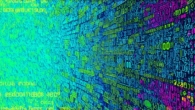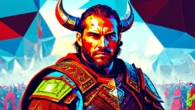
How do NFTs operate
Introduction

Non-Fungible Tokens (NFTs) are becoming increasingly popular in various industries such as art, music, gaming, and sports. They offer unique ownership and authenticity that can’t be replicated or traded. However, for NFT developers, creating and managing NFTs can be complex and challenging. In this article, we will discuss how NFTs operate, the key concepts involved in NFT creation, and best practices for NFT development.
What are NFTs?
NFTs are digital assets that represent unique items or experiences. They are stored on blockchain technology, which provides a tamper-proof and transparent record of ownership and transactions. NFTs are different from cryptocurrencies, which are fungible and can be traded for other assets. The most famous example of an NFT is the sale of Beeple’s “Everydays: The First 50 Days” art piece, which was sold for $69 million at Christie’s auction house in 2021.
How do NFTs work?
NFTs are based on smart contracts, which are self-executing agreements that automatically execute when certain conditions are met. The smart contract defines the ownership rights, metadata, and other properties of the NFT. It also specifies how the NFT can be transferred or sold, as well as any royalties or fees associated with it.
NFTs have three key components:
- Metadata: This is a set of data that describes the unique characteristics of the NFT. The metadata includes information such as the creator’s name, title, description, image URL, and other attributes. It also specifies how the NFT can be used or interacted with.
- Token: This is the digital asset itself, which is stored on a blockchain. The token is represented by a unique identifier (e.g., a cryptographic hash) that is assigned to it when it is created. The token is transferred between parties when the NFT is bought or sold.
- Blockchain: This is the underlying technology that enables the creation, management, and transfer of NFTs. The blockchain provides a secure and transparent record of ownership and transactions, which ensures that each NFT has a unique and unalterable history.
The creation process for NFTs involves several steps:
- Design: This involves creating the unique artwork or experience that will be represented by the NFT. It can include anything from digital paintings to music compositions to video games.
- Tokenization: This is the process of converting the digital asset into a token, which can be stored on a blockchain. The token represents ownership and authenticity of the artwork or experience.
- Minting: This is the process of creating the NFT by assigning it a unique identifier (the cryptographic hash) and associating it with the metadata. The NFT is now ready to be bought, sold, or used in various ways.
Best practices for NFT development
Here are some best practices for NFT developers:
- Know your audience: Before creating an NFT, it’s important to know who your target market is and what they value. This will help you design the NFT in a way that appeals to them and maximizes its potential.
- Keep it simple: While NFTs can be complex, it’s important to keep the user experience as simple and intuitive as possible. This includes designing the NFT with a clear purpose and providing easy-to-use tools for buying, selling, and interacting with it.
- Follow standards: There are several standards and protocols that are used in NFT development, such as Ethereum, Flow, Binance Smart Chain, and others. It’s important to follow these standards to ensure compatibility and interoperability across different platforms.
- Secure your assets: As with any digital asset, NFTs are subject to security risks such as hacking, theft, and data loss. Therefore, it’s important to secure your NFTs by implementing best practices for blockchain security, such as using multi-factor authentication, encrypting sensitive data, and performing regular backups.
- Plan for future updates: As technology evolves and new use cases emerge, it’s important to plan for future updates to your NFTs to ensure they remain relevant and valuable. This can include adding new features, improving the user experience, or integrating with other platforms.
Case study: Cryptokitties
Cryptokitties is a blockchain-based game that allows users to create, breed, and sell unique digital cats. The game was launched in 2017 on Ethereum and quickly became the first decentralized app (dapp) to reach $1 million in daily transactions. Cryptokitties used NFTs to represent each cat in the game, providing ownership and authenticity that could not be replicated or traded.
Key takeaways from the Cryptokitties success story:
- Creating a unique and engaging experience is key to driving user adoption and value. The Cryptokitties game provided a fun and interactive way for users to collect and trade NFTs, which contributed to its popularity.
- NFTs can be used in various industries, not just art and music. Cryptokitties demonstrated how NFTs can be used in gaming and entertainment, opening up new possibilities for future use cases.
- Planning for future updates is essential for long-term success. Cryptokitties continued to evolve the game over time, adding new features such as breeding cats and integrating with other platforms, which helped keep the community engaged and invested.
Conclusion
NFTs are an exciting and rapidly evolving technology that offers unique ownership and authenticity for digital assets. As NFT developers, it’s important to understand how NFTs work, the key concepts involved in NFT creation, and best practices for NFT development. By following these guidelines, you can create successful NFTs that resonate with your target audience and contribute to the growing ecosystem of decentralized applications on blockchain technology.







